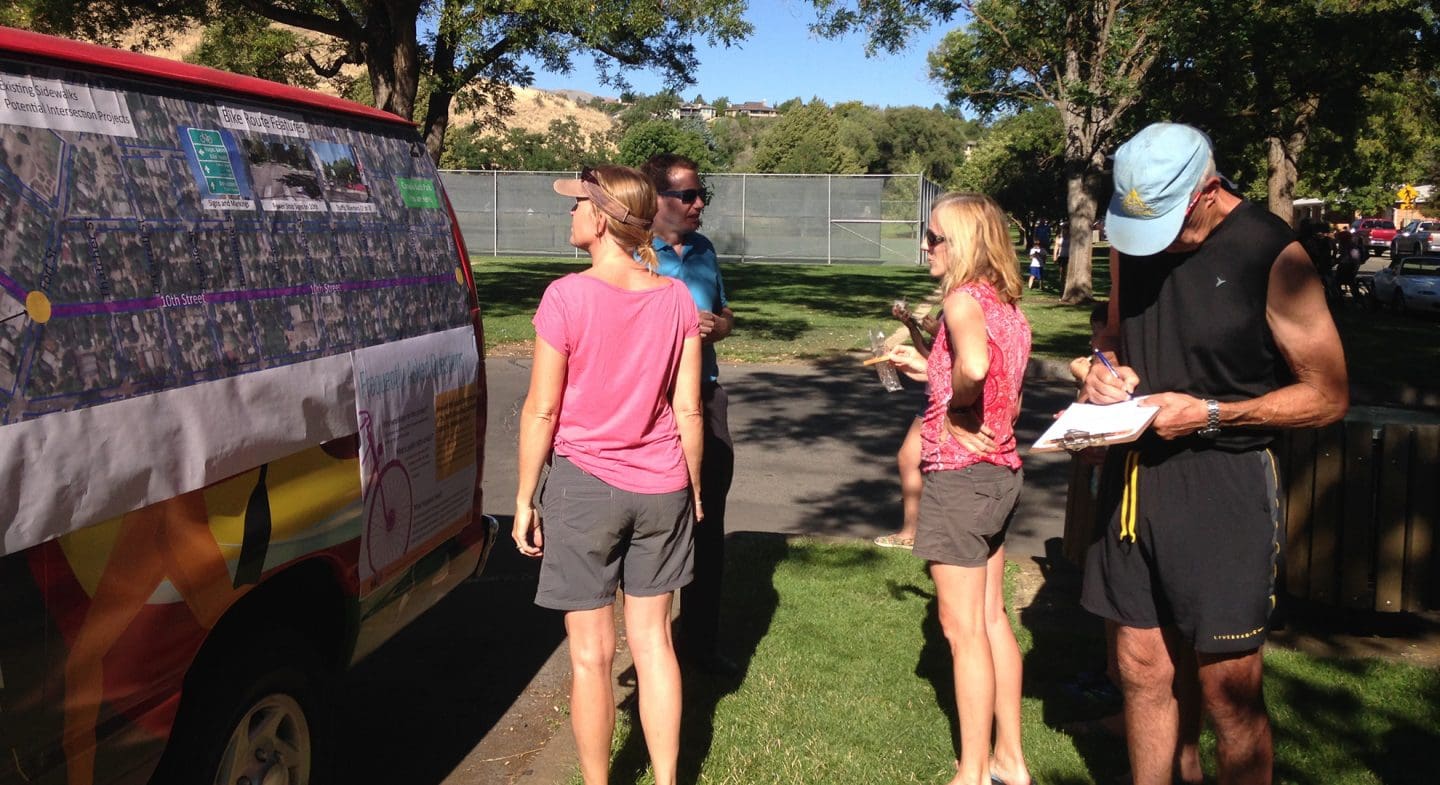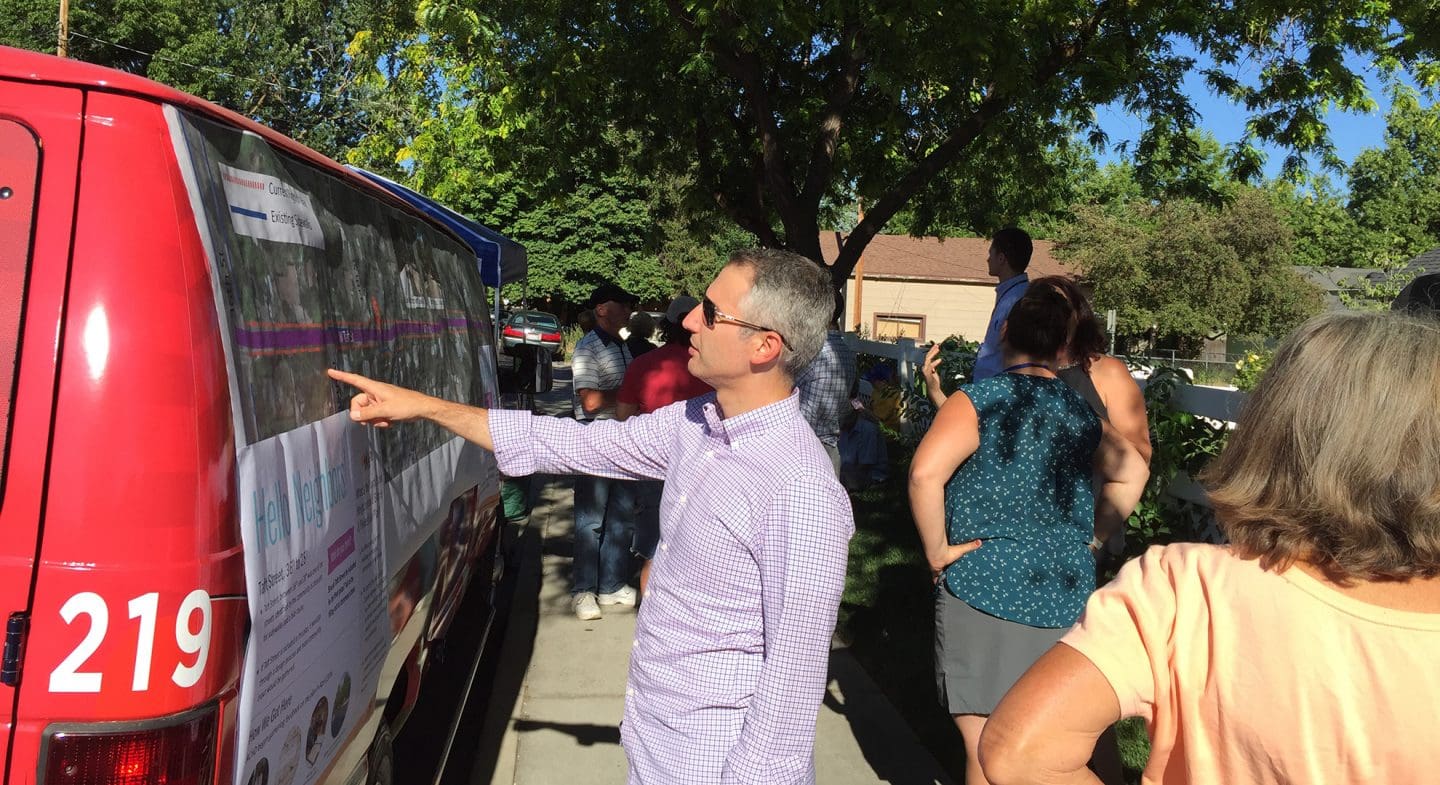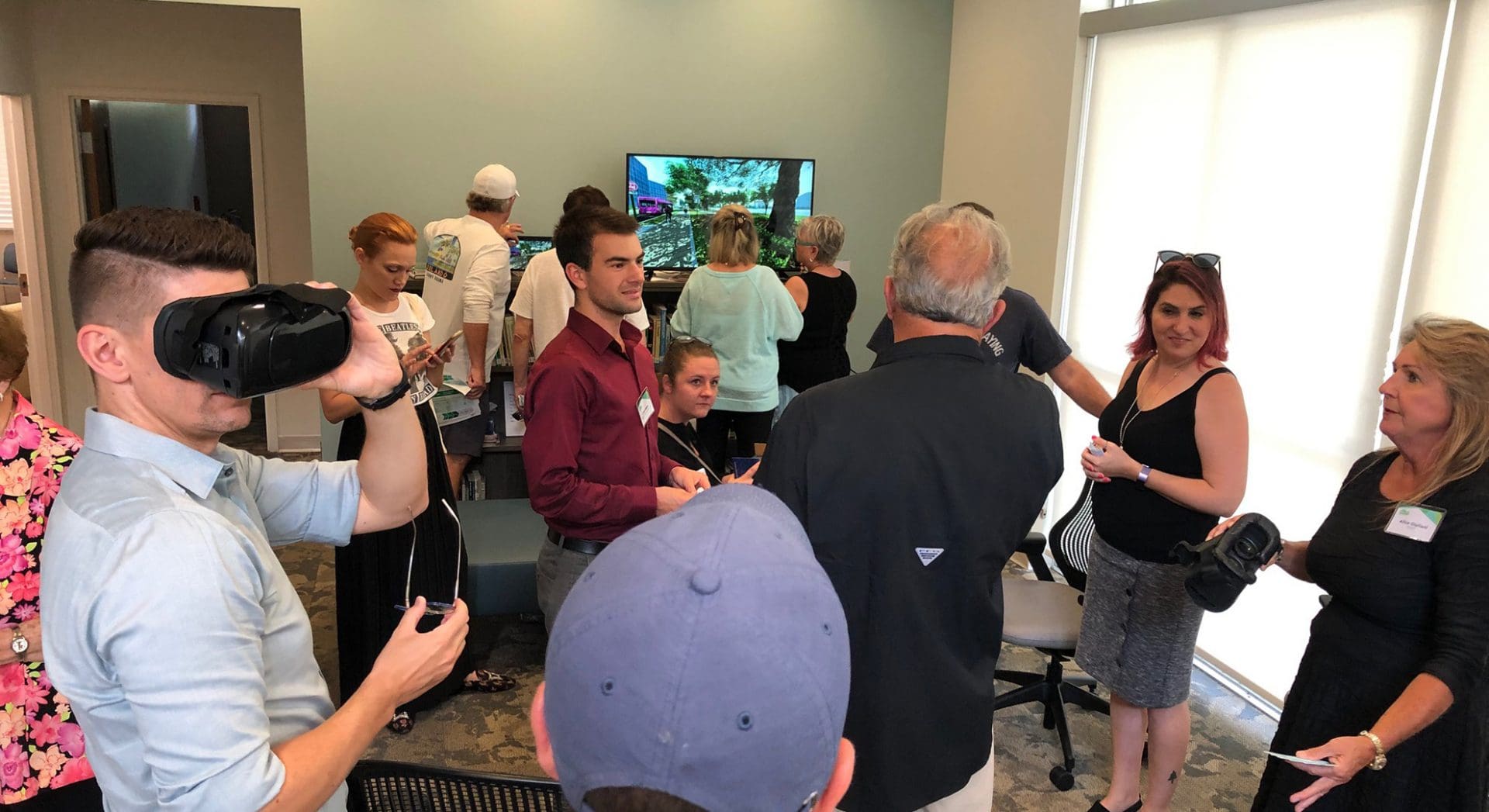June 17, 2019
As a transportation planning and engineering firm, we exist to improve people’s daily lives with better and safer transportation. The only way we can do that well is through understanding what matters most to the people who live, work, and play in their neighborhoods and communities we’re serving.
Meaningful community engagement – both listening and responding to community feedback as we support our clients in building transportation plans – is the backbone of a thoughtful and effective planning approach.
At the same time, community engagement is both complex and challenging, and mistakes can be costly – not just in time and budget, but also in trust with the public. As we’ve continued to learn and improve our process, we’ve identified six common pitfalls of community engagement approaches. We’ve compiled them here, along with the strategies we recommend to avoid the pitfalls and conduct outreach that’s effective, transparent, and meaningful.
1. Going to the public too late in the process.
The first – and perhaps most detrimental – pitfall of community engagement is viewing the process as just a checkbox on a plan. Effective dialogue is the only way we can sincerely understand the lived experiences of the residents and businesses who are experts on their communities. It’s both courteous and essential to engage at key points.
Solution: Engage with the public early and often, even when it’s just to share information.
Transportation planning is a process of making decisions that ultimately result in an actionable roadmap for change. Each project moves through many crossroads in which residents’ and businesses’ priorities should be built into the decision-making criteria. Sometimes, community engagement is needed simply to update them on what has been happening. If a community doesn’t have context about previous decisions that were made, they are missing information they will need going forward.
2. Holding an open house in a hard-to-access location or inconvenient time.
We’ve all had that meeting in an agency’s headquarters when presenters were prepared, detailed posters were set up, and interactive activities were planned”¦ and only five people showed up. If our goal is to connect with community members, we must consider locations that are interesting and accessible to them. In our experience, forgoing formality and focusing on connection can have tremendous payoff.
Solution: Look outward, not inward, when deciding where and when to host a meeting – and be creative!
While gathering input for a bicycle/pedestrian plan in northern Boise, we held a series of “Popsicles & Sidewalks” events to gather feedback from the property owners and residents who would be directly affected by the proposed project. After advertising the event with door hangers and postcards, we drove into the neighborhood and set up displays with project information on the sides of vans. With incentives of free ice cream and popsicles, we chatted with neighbors to hear their priorities and preferences directly. The meetings attracted a number of residents, and more than 130 comments were received in total. The information we gleaned from this outreach series helped us narrow down a list of bicycle/pedestrian projects for the area.


3. Making the information too technical.
We’re not effectively sharing information if we use transportation jargon at meetings and workshops. Remember that most people don’t read aerial maps every day or speak in the language of “alternatives.”
Solution: Draw connections between the project and people’s daily lives.
We’re engaging with the public to better understand their day-to-day experiences and find solutions for improvement. Community members are looking for a better, safer, and more efficient transportation experience.
Look for ways to show, not just tell, people about the pros and cons of the alternatives or project recommendations on the table. One of our favorite setups is “augmented reality on the go,” in which attendees hover their smartphones over a poster board on an easel to grab the link to a survey or visualize what a new street design would look like.
At a public meeting in Orlando, we needed community input on traffic diversion to neighborhood streets. Rather than trying to interpret travel demand models and telling community members what they were supposed to see, we used a combination of virtual reality and Google travel time to set up realistic scenarios that they could see and experience for themselves. Attendees had so much fun that we had to kindly ask people to leave at the end of the night.

At a public meeting in Orlando, we used a combination of virtual reality and Google travel time to help attendees envision future scenarios.
4. Keeping feedback invisible.
When you ask workshop attendees to write notes and drop them into a box, they see no evidence that feedback is being read and understood (even if it is). When people take the time to express their opinions, it’s important to demonstrate active listening and explain how their input will be used.
Solution: Demonstrate how feedback is being recorded and applied.
Give attendees places to visibly write in responses, such as on a map or poster. Don’t be secretive about taking notes. After the survey or meeting has concluded, report back so people can see what came out of it, and how that information will inform the project.
Comments received through surveys, project websites, and public meetings can be translated directly into goals. Performance measures can be created for each of those goals. Alternatives can be evaluated using those performance measures. Ultimately, the alternative you recommend can be traced back to the input you received from the community, a powerful way to demonstrate you’ve been listening.
5. Asking questions that aren’t going to influence the outcome.
The questions you ask matter, and so does the way you phrase them. For example, if you ask the public to vote to pick alternatives, but you have a group of decision makers who is ultimately going to make the selection, you are setting yourself up to pit those decision makers against the public, which couldn’t be further from the goal of good community outreach.
Solution: Ask yourself: what do you need to know from the public at this stage in the planning process?
It’s much better to ask three thoughtful questions – from which you can apply the responses – than 15 questions that mislead attendees or don’t address what you really need to know. Questions such as what you like or dislike about this alternative can help decision makers consider tradeoffs.
6. Expecting that everyone will come to you.
If you set up meetings with the expectation that everyone who cares will show up, you’ll find yourself hearing from the same group over and over again. Are you hearing from residents of every income level? What about those who speak a different language? What about those most impacted?
Solution: Create meaningful connections with organizations in the community that can help you reach more residents.
Colleges, public health departments, schools, HOAs, and nonprofits can help to connect project teams and the community. At times, they’ve provided us with interns who have helped us interact with community members we otherwise wouldn’t hear from, while being efficient with time and budget.
Finding people on the go through mobile engagement is also important. Digitally advertising online surveys and public meetings helps us go beyond the middle-class groups we tend to hear from. We seek input from those in underserved neighborhoods through social media advertising targeted by zip code, combined with placing physical posters and flyers in those neighborhoods for people who might not have a smartphone or data plan.
What community engagement pitfalls have you identified and overcome?
What community engagement approaches have helped you listen well and learn valuable information? We’re always game to swap ideas. Reach out to one of us to chat further about effective strategies for community engagement around transportation planning projects.
